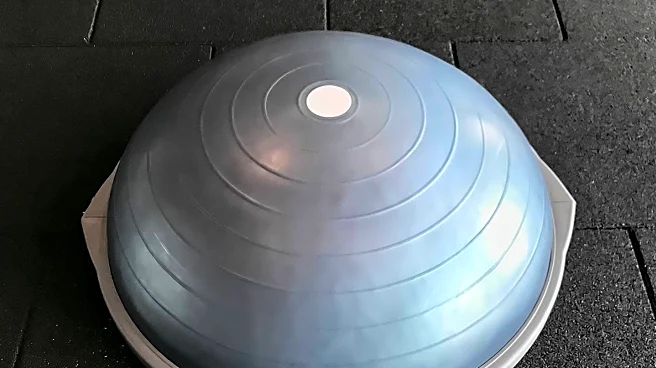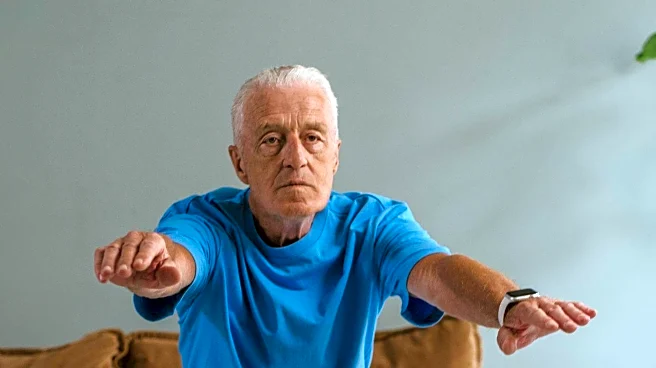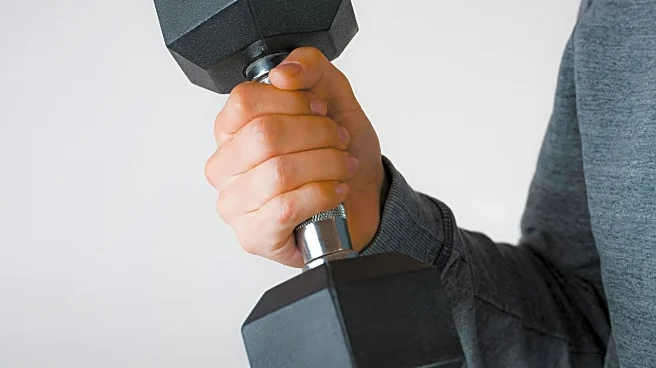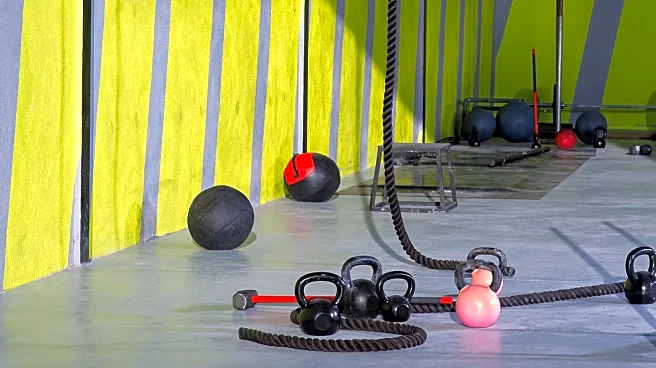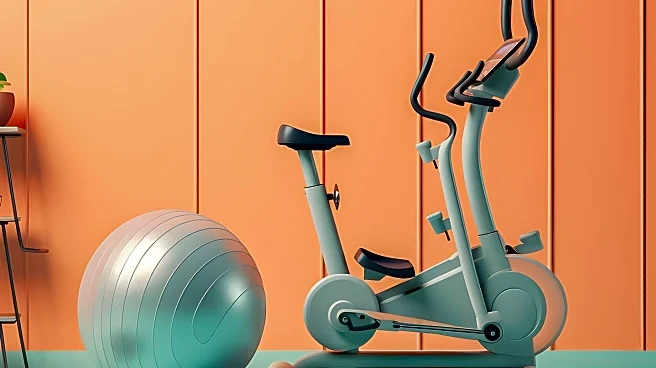What's Happening?
Eric North, a wellness speaker and coach, emphasizes the importance of regular exercise for individuals over 50 to combat age-related muscle loss and maintain a good quality of life. North recommends at least
150 minutes of moderate-intensity aerobic activity per week, which can be broken down into 30 minutes a day, five days a week. This can include activities like brisk walking or high-intensity interval training (HIIT). Additionally, incorporating muscle-strengthening exercises twice a week is crucial. Frances Egbert, a dynamic stretch specialist, supports this approach, highlighting the benefits of consistency in maintaining strength, balance, and flexibility. The article suggests that while 20 minutes of daily exercise is beneficial, it falls short of the recommended guidelines.
Why It's Important?
As individuals age, they naturally lose lean muscle mass and bone density, which can impact their quality of life. Regular exercise helps mitigate these effects, improving cardiovascular endurance, functional strength, and balance. This is particularly important for older adults to maintain independence and prevent falls. The recommended exercise regimen not only supports physical health but also boosts metabolism and emotional vitality. By adhering to these guidelines, older adults can enhance their ability to perform everyday tasks and engage actively with life.
What's Next?
The article suggests that individuals should focus on compound movements like squats and rows, and include exercises that improve balance and core strength. Keeping rest periods short, under 15 seconds, is advised to maintain momentum during workouts. For those new to fitness routines, starting with a structured 20-minute daily exercise can lead to noticeable improvements in strength and balance. Consistency is emphasized as the key to success in building healthy habits.
Beyond the Headlines
The article highlights the importance of balance work in strength exercises, such as single-leg squats or split-stance presses, which train the body for real-life functionality. This approach maximizes limited time and builds both muscle power and neurological coordination needed for stability. The investment in regular exercise is minimal, with practically zero equipment needs, yet offers extraordinary returns in terms of resilience and independence.


